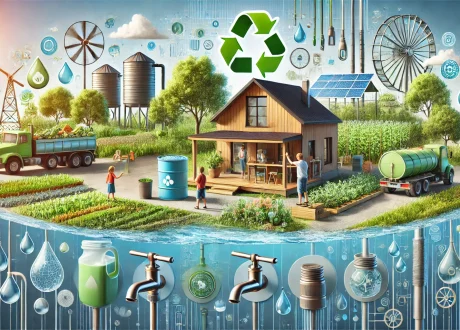
Water Conservation: 7 Simple Ways to Save Water at Home and in Your Business
Water is one of our most precious resources, yet it is often wasted without thought. ...

The World Meteorological Organization (WMO) highlighted that 2022-2024 marked the largest three-year loss of glaciers on record, thus causing sea-level rise with every millimeter of sea-level rise exposing 200,000- 300,000 people to annual flooding.
Five of the past six years have witnessed the most rapid glacier retreat on record. 2022-2024 witnessed the largest three-year loss of glacier mass on record. In many regions, what used to be called glaciers’ “eternal ice” will not survive the 21st century, according to reports from the World Meteorological Organization (WMO) and the World Glacier Monitoring Service (WGMS).
More than 275,000 glaciers worldwide cover approximately 700,000 km². Together with ice sheets, glaciers store about 70% of the global freshwater resources. High mountain regions are the world’s water towers. Depletion of glaciers therefore threatens supplies to hundreds of millions of people who live downstream and depend on the release of water stored over past winters during the hottest and driest parts of the year. In the short-term, glacier melt increases natural hazards like floods.
The 2024 hydrological year marked the third year in a row in which all 19 glacier regions experienced a net mass loss. Glacier mass loss was 450 billion tons in the 2024 hydrological year – the fourth most negative year on record. While the mass loss was relatively moderate in regions like the Canadian Arctic or the Greenland periphery, the glaciers in Scandinavia, Svalbard, and North Asia experienced their largest annual mass loss on record.
A study – the so-called Glacier Mass Balance Intercomparison Exercise (GlaMBIE) – found that between 2000 and 2023, glaciers lost 5% of their remaining ice. Regionally, the loss ranges from 2% in the Antarctic and Subantarctic Islands to almost 40% in Central Europe.
At present melt rates, many glaciers in Western Canada and the USA, Scandinavia, Central Europe, the Caucasus, New Zealand, and the Tropics will not survive the 21st century.
From 2000 to 2023, the global glacier mass loss totals 6,542 billion tons – or 273 billion tons of ice lost per year, according to the study. This amounts to what the entire global population currently consumes in 30 years, assuming three liters per person per day.
During this period, glacier melt contributed 18 mm to global sea-level rise.
“This might not sound much, but it has a big impact: every millimeter sea-level rise exposes an additional 200,000 to 300,000 people to annual flooding,” said Prof. Dr. Michael Zemp, the Director of the WGMS.
Glaciers are currently the second-largest contributor to global sea-level rise, after the warming of the ocean.
The United Nations General Assembly proclaimed 2025 as the International Year of Glaciers’ Preservation and established 21 March as the annual World Day for Glaciers. It seeks to increase awareness of the vital role that glaciers, snow, and ice play in the climate system and hydrological cycle, and their importance to local, national, and global economies. UNESCO and WMO are spearheading activities and coordinating international efforts supported by over 200 contributing organizations and 35 countries.
On the first World Day for Glaciers, the WGMS presented the first “Glacier of the Year”. With this, it aims to highlight the beauty of glaciers around the world and to honor the dedication of glaciologists who have been observing them for decades as a contribution to an internationally coordinated monitoring effort. In 2025, South Cascade Glacier was selected as Glacier of the Year.
The South Cascade Glacier is in the Cascade Range in Washington, United States. It has been continuously monitored since 1952 and provides one of the longest uninterrupted records of glaciological mass balance in the Western Hemisphere.
“South Cascade Glacier exemplifies both the beauty of glaciers and the long-term commitment of dedicated scientists and volunteers who have collected direct field data to quantify glacier mass change for more than six decades”, says Caitlyn Florentine, Co-Investigator of the glacier from the U.S. Geological Survey.
اترك تعليقا